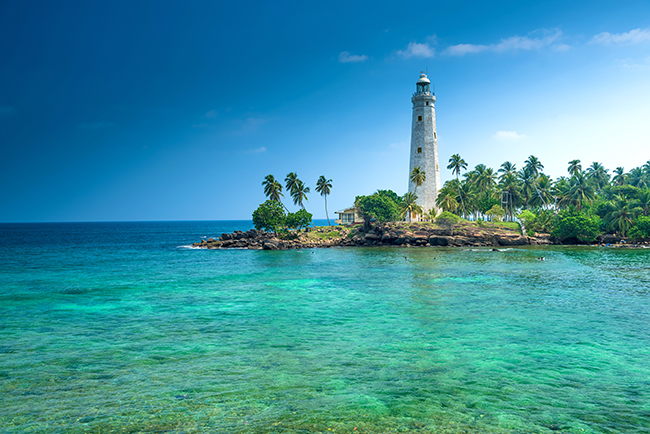Sri Lanka is a small island state located in South Asia near the Hindustan Peninsula. The official name is the Socialist Republic of Sri Lanka, which the country received in 1972. The state used to be called Ceylon. The official capital of Sri Lanka was recognized by Sri Jayawardenepura Kotte. In fact, the capital’s functions are played by the largest city in the republic called Colombo. In Sri Lanka, the climate is very pleasant, due to which a large number of tourists come here.
Sri Lanka Weather
The climate on the islands is humid and warm. The temperature is fairly uniform, and during the year there are no sharp changes. The difference between the warmest and coldest time does not exceed several degrees. The average monthly temperature is 30 degrees. The seasons in these places differ in rainfall. It rains most often in the summer. The coastal areas of the country are most comfortable for living. In large cities in the country, the weather is hot and humidity is high. The average water temperature in the ocean is 27 degrees, and with air temperature the difference does not exceed 2-3 degrees.
A little cooler in the highlands of the country. A place called Nuwara Eliya is located at an altitude of 1884 m above sea level. The average annual temperature here is 18 degrees, and in the cold at night the thermometer can show 10 degrees. Such cold weather forces local hoteliers to turn on heating equipment in the evening and at night. In this regard, everything must be provided so that the rest is not overshadowed by precipitation. A favorable and even climate throughout the year gives vacationers the opportunity not to think about choosing a month for a vacation in the capital. Here, in any months, local residents and tourists feel complete comfort.
Rainy season
Understanding how much the climate is changing in an island nation is not easy the first time, so you need to be careful. Basically, the island has an equatorial climate, which differs in two seasons – rainy and dry.
In the very center of the island stands the Central Mountain Range, which creates a rain shadow for the southwest of Sri Lanka. This is the wet zone of the island, where the southwest monsoons come all summer. They form in the Arabian Sea and go to the island with a wall of warm air. At the same time, the mountain massif contributes to the fact that in the rest of the country at this time it is relatively dry. In the eastern and northern parts of the country, the average annual amount of precipitation ranges from 1200-1800 mm, and in the south-west this figure varies from 2540 to 5080 mm.

The eastern and northern parts of the country are influenced by the northeastern monsoons, which are observed here from November to February. Many cyclones that form in the Bay of Bengal collapse on the coasts of India and Bangladesh, but Sri Lanka also sometimes suffers, despite its remoteness.
The rainy season in Sri Lanka is characterized by short but very heavy rains, which mostly go at night. The main inconvenience in this case is created by a strong wind, which forms high waves in the ocean, so no one even dreams of a calm and safe bathing.

The autumn and winter months on the island are a period of inter-monsoon periods when there are no heavy rains, however anti-aircraft rains periodically. Thus, winter is considered the optimal period for a holiday in the southwest, and summer is considered to be in the north and east of the country.
